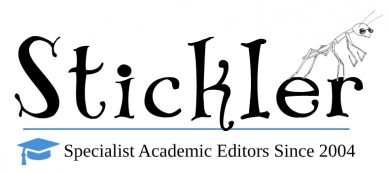When you’re working on an assignment, a lot of questions come up that have nothing to do with grammar. Should you write numbers using the word or the actual digit? Do your abbreviations need periods in between the letters? How exactly do you punctuate the in-text citations and reference list?
You must turn to a designated style guide for help.
These guides don’t just govern spelling preferences; they set standards for formatting, documenting sources, and usage—issues that usually have more than one correct answer. The most common systems within academia include APA (American Psychological Association), Chicago, Harvard, MLA (Modern Language Association), Turabian, and Vancouver, but there are many others. Though there is some crossover, different systems are designed for different disciplines, so the one you use for your work is likely to be dictated by your school or by the journal you are submitting to (depending on your end goal). Each guide is also revised periodically, so adherents must be adaptable in their practices as well.
Below are the style guides that we are asked to apply most often in our work as academic editors. We’ve also included an example reference list entry for a book with one author, just so you can see how these style guides differ, but bear in mind that most of these systems outline rules related to punctuation, number usage, table layout, and so on as well.
APA: The American Psychological Association has its own style guide for those publishing in the fields of psychology, social sciences, and nursing.
Example: De Caro, J. (2016). The songs of Argentine tango (10th ed.). Los Angeles, CA: Bando Publishing.
Chicago: The Chicago Manual of Style dates back to the 1890s. Its reach is wide-ranging, and many other style guides use Chicago Style as a starting point, and even defer to it in some cases. While mainly researchers and scholars use this when they write for publication, many magazines, online journals, and business entities often instruct their writers to apply Chicago Style as well.
Example: De Caro, Julio. The Songs of Argentine Tango. 10th ed. Los Angeles: Bando Publishing, 2016.
Harvard: As you may have guessed, Harvard style originated from Harvard University. There is no go-to manual for Harvard style, so its exact application can vary quite a bit between institutions. It is very similar to APA in a lot of ways, though with some subtle differences.
Example: De Caro, J. (2016). The Songs of Argentine Tango. 10th ed. Los Angeles, CA: Bando Publishing.
MLA: MLA style is most frequently used by researchers in literature and language, and in the humanities in general. You’ll see two books connected with the MLA. Broadly speaking, The MLA Style Manual is meant for graduate studies and beyond, while The MLA Handbook is for college and university students in the humanities.
Example: De Caro, Julio. The Songs of Argentine Tango. Los Angeles: Bando Publishing, 2016. Print.
Turabian: Undergraduate students are often directed to use this style, which is heavily based on the Chicago style.
Vancouver: Vancouver is most often used in scientific disciplines. In-text citations are indicated using numbers, while full details are provided at the end of the paper as a corresponding, sequentially numbered list.
Example: [1] De Caro, J. The songs of Argentine tango. 10th ed. Los Angeles, CA: Bando Publishing; 2016.
Of course, there are many more style systems, depending on your field and subject matter. In addition, to make matters more confusing, many journals and schools use styles that are only loosely based on an existing system—for example, they might use APA but with commas instead of periods, or a different approach to capitalizing titles—so it’s vital that you scrutinize your school/journal’s style guide closely and note any deviations.
Sticking to the required style guide will increase your professionalism and increase your chances of getting your paper published, or receiving a higher grade. In addition, when it comes to in-text citations and bibliographies, correctly documenting your sources tells your readers where you’ve gotten your information, and this is your best defense against plagiarism.
As long as you understand why it’s so important to adhere to a style guide, you’re well on your way to reconciling yourself with all the rules. But applying every stipulation perfectly can be a big ask in the scope of writing a complex paper, thesis, or dissertation. We at Stickler are familiar with all major academic style guides, and make sure we keep on top of changes and updates. Whenever you submit work to us, just send us the relevant style link or document and we’ll make sure all the requirements are met.

